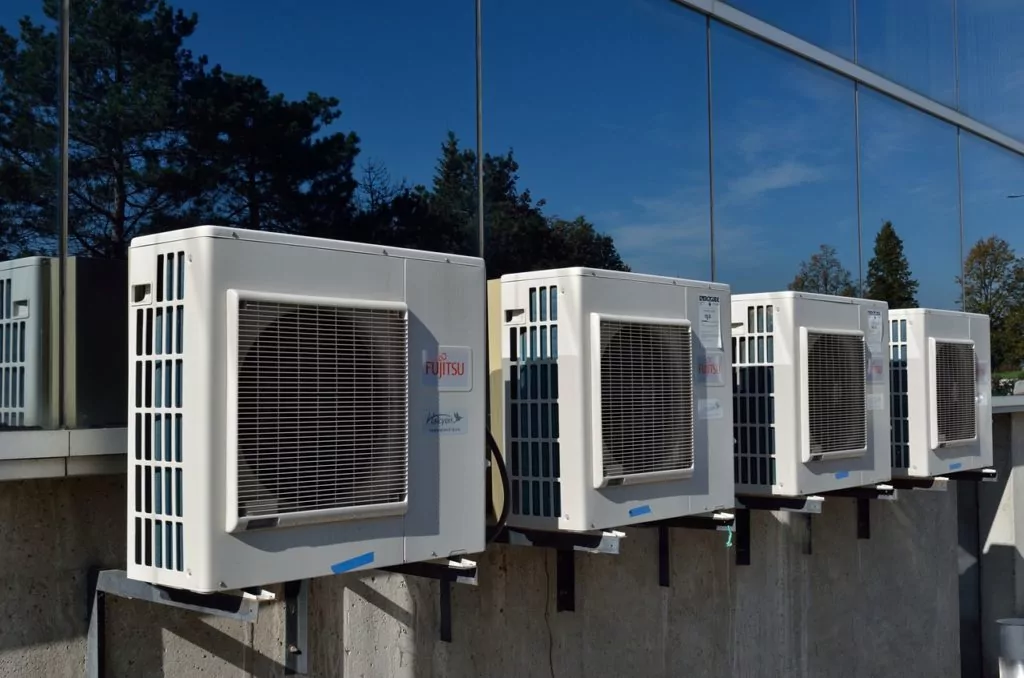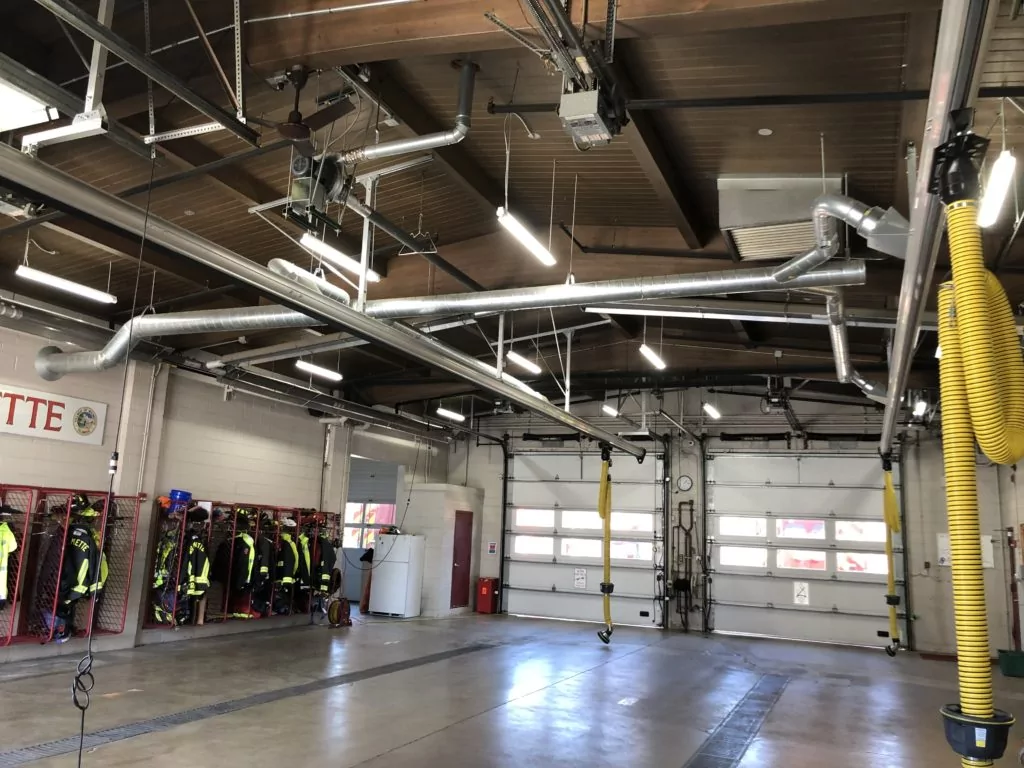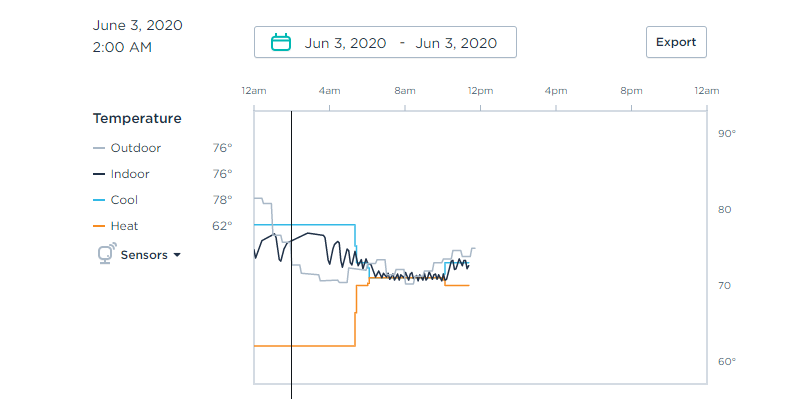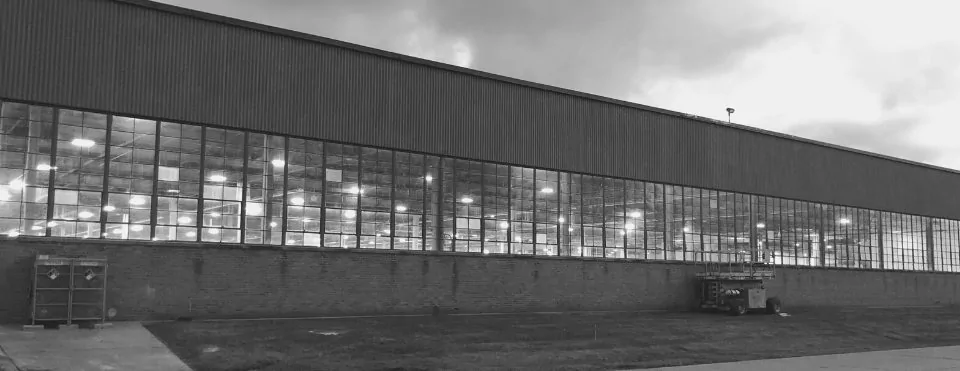Advanced HVAC Systems for Your Restaurant

Mar 05 2018
Are you a restaurant owner and ever wondered if you are losing money on your HVAC systems? Chances are, the answer is yes. Modern restaurants have a lot of systems that create heat and remove heat, often fighting against each other. In addition, modern code works to keep our occupants safe but often introduce more air flow and exhaust fans, which create even more challenges for the systems that add and remove heat.
Luckily, there are fairly easy projects that you can undergo to save money and energy for your restaurant. And since Verde Energy Efficiency experts has completed over 1,000 energy efficiency projects for restaurants over the past 10 years – we have a lot of experience to back this up.
Smart Thermostat
A great first step is to consider is to consider a smart thermostat for your restaurant, as maximizing the efficiency of your existing equipment is where it all begins. In the linked article, we recommend the Pelican Smart Thermostat for your restaurant because of their focus on commercial products, as well as the ability to integrate a CO2 sensor in the thermostat for demand control ventilation. However, they are also price competitively and offer fantastic support to businesses and the HVAC contractors that support them.
Any smart thermostat is good for your business, although we do see folks sometimes replace a Nest thermostat in a restaurant, because it is too focused on residential. It enables too much control and adjustment, and doesn’t help you understand fresh air like a Pelican smart thermostat can do – something required in public and commercial buildings, but not in residential homes. That being said, we have seen many offices and small businesses love the Nest – so each application is different.
We have also seen a lot of our customers enjoy the Ecobee EMS Si product – which is a canadian manufacturer that does a great job of provide data and aims toward the commercial market. While the EMS Si lacks the CO2 sensor integrated into the thermostat, it also charges for the online platform – which can add up for those that have a lot of facilities and thermostats.
Finally, we love that the Pelican thermostat works on a mesh network This means the more thermostats you have, the better they all communicate to each other and the sensors and cloud data. Again, this highlights the difference between a residential HVAC system with one furnace and AC, and a commercial building that may have as many as 10 RTUs heating, cooling and ventilating the spaces.
Priority Energy Air Balancing

A building that is out of balance is either pulling in too much air, or pushing out too much air. The front door will stick, and open doors or windows will have air rushing in and out. The feel less comfortable, and they waste more energy.
An Energy Recovery Ventilator is a great energy efficiency product that recovers up to 93% of the energy leaving a space. It provides a huge benefit to the energy load of a space, but in addition, it can help balance a space. It does this automatically by design, where one fan blows air into the building, and the other blows air out. As they cross against each other, the heat and energy from one air flow is transferred to another. However, as these fans can run at different speed or CFM, it automatically can balance a space.
We saw this in our pilot VHE HVAC sustainability project, in a grand rotunda entryway for the space. The last roof top unit removed was from the entrance to the building, which had cold air rushing in during building usage because the RTU was out of balance. But – as we replaced it with the ERV – the space balanced itself and air did not flow in with such velocity, creating more comfort in the entrance and less wasted energy.
Advanced Measures
After you have done smart thermostats and made sure your building is balanced, consider these advanced HVAC systems for your location.
Cooking food is a must for restaurants, and taking the smoke and heat out of the kitchen is also required for both comfort, safety, and building codes.
However, exhaust fans are traditionally an on/off control, and they run at high speed as long as there is cooking in your building. For many fast food restaurants, that can be 24 hours a day, 7 days a week. Since these fans need to pull all smoke out of the building, they typically pull a ton of conditioned air out of the building as well. What does this mean? As you try to keep your customers cool on a hot summer’s day, your exhaust fans pull a huge amount of that air out of the building and makes your air conditioner work even harder.
Fortunately, there are advancements in exhaust fans that allow variable speed fans. These can ramp up or down, based on the actual usage of cooking (instead of constantly running 100%). The differences that can be saved on both electricity and gas energy can be significant, although they vary based on your geography in the United States. In addition, you can connect this controller to your HVAC system, to communicate to your economizer on your rooftop HVAC units and really balance the in and out of the air in your store.
This means, when a customer enters your stores or your drive-through window opens, air will be at balance and a minimum amount of airflow will occur. We have heard countless stories of the drive-through window employee being bundled up in winter coat until the Kitchen DCV (Demand Control Ventilation) gets installed, and then they can comfortably wear just their uniform.
Here is a step by step description of what installing a kitchen exhaust Demand Control Ventilation will look like.
First – you need to install Direct Drive or variable speed drive motors in your exhaust fans. We typically use Greenheck, although there are a lot of brands of motors available.
Next, you need to install a central communication system that can control the fan speed. We use the Franke Variable Ventilation. Many kitchen DCV controls insert a sensor in the cooking hood to know when the fans need to be ramped up, but the Franke HVAC system actually connects directly to the cooking equipment to ramp up and down based on usage. Both accomplish the same goal, but we personally have found the Franke system to have stronger ROIs.
Finally, the Kitchen DCV system needs to be connected to the HVAC supply for the restaurants. This is incredibly important, as balancing the air is where much of the energy savings comes from. Almost as important, if not more, this will create a more comfortable environment for both customers and employees.
One of the best parts of installing one of these systems? There are strong energy savings for HVAC upgrades, and therefore, often strong energy efficiency rebates. In fact, in Chicago there are ComEd Rebates that cover as high as 75% of the cost of improvements, depending on your number of exhaust hoods and current equipment. In fact, HVAC improvements are a growing portion of the ComEd Energy Efficiency Program.
Do you lack economizers on your RTU – no problem! There are very generous utility rebates for those as well, and often those make sense to be replaced even if they are only 6-10 years old with a CEE Tier 2 level energy efficient RTU with SEERs as high as 16.1.
Walk in Cooler and Freezer Efficiency
Making your walk-in cooler or freezer more efficient can save you money on energy costs and extend the life of your equipment. Here are some tips to consider:
Doorways and Seals:
- Doors: Ensure doors close tightly and automatically with self-closing hinges or door closers. Install air curtains or strip curtains and doors to minimize cold air loss when opened. Verde can offer these to our commercial customers at no charge via Commonwealth Edison Rebates in Illinois.
- Seals: Inspect door seals regularly for tears, cracks, or icing, and replace them promptly. Apply lubricant to keep them supple and airtight. This is no different than your home – air that leaks out is wasted energy.
Temperature Control and Maintenance:
- Thermostat: Check your thermostat’s accuracy and set the optimal temperature (typically 35-38°F for coolers and -14 to -8°F for freezers). Avoid unnecessary temperature fluctuations.
- Defrosting: Regularly defrost your evaporator coils (typically monthly for freezers and bi-weekly for coolers) to maintain efficient heat transfer. Consider automatic defrost systems for convenience.
- Airflow: Ensure proper airflow around condenser coils by removing obstructions and keeping filters clean.
Storage and Organization:
- Minimize door openings: Organize products efficiently to minimize the time doors stay open. Label shelves for easy access and reduce time spent searching.
- Fullness: Aim for 70-80% capacity to allow for proper air circulation and efficient cooling. Avoid overloading shelves.
- Spacing: Keep products away from walls and evaporator coils to allow for optimal airflow.
Additional Strategies:
- Lighting: Use energy-efficient LED lighting and turn off lights when not in use.
- Floor drains: Keep drains unobstructed for proper condensate drainage and prevent potential leaks.
- Preventive maintenance: Schedule regular professional maintenance by qualified technicians to ensure optimal performance and identify potential problems early.
- Invest in upgrades: Consider energy-efficient upgrades like high-efficiency freezer and cooler motors, variable-speed drives, and heat reclaim systems. Often, incentives can cover a huge portion of these costs, since they mean big energy savings. More savings typically means more rebates and incentives.
By implementing these tips, you can significantly improve the efficiency of your walk-in cooler or freezer. Remember, small changes can add up to big savings in the long run!
Don’t Forget about LED Lighting in Your Restaurant
We focused on HVAC and advanced measures for saving energy for your restaurant, but don’t forget about one of the most basic energy users in your restaurant – lighting. LED lighting is crisp, saves energy, reduces maintenance, and has one of the fastest Return on Investments in the industry.
In the culinary world, presentation is key. Beyond the artistry on the plate, the ambiance of your restaurant plays a crucial role in crafting a memorable dining experience. And in this symphony of sights and sounds, LED lighting emerges as the conductor, orchestrating the atmosphere and influencing everything from guest mood to food perception.
First and foremost, LED lights shine a spotlight on sustainability. Compared to traditional incandescent bulbs, LEDs boast superior energy efficiency, consuming up to 75% less energy. This translates into significant cost savings on your electricity bill, leaving more resources to invest in the heart of your restaurant – your culinary creations and staff. Moreover, the extended lifespan of LEDs (lasting up to 25 times longer than incandescents) reduces waste and minimizes maintenance needs, making them a responsible choice for the environmentally conscious restaurateur.
But beyond saving green, LED lighting lets you paint your restaurant with the perfect shade of green (or any color, for that matter!). The versatility of LED bulbs allows you to customize the ambiance with an array of color temperatures and dimmable settings. Create a warm and inviting glow for intimate dinners, or switch to a cooler, brighter light for bustling lunches. You can even incorporate dynamic color-changing LEDs to set the mood for themed nights or special occasions, transforming your restaurant into a vibrant canvas for culinary expression.
Finally, LED lighting elevates the presentation of your culinary masterpieces. Their crisp, bright illumination showcases the vibrant colors and textures of your dishes, making them even more mouthwatering. Unlike traditional bulbs that emit harmful UV rays, LEDs protect your precious ingredients and artwork from fading or spoilage, ensuring your guests witness the full visual artistry of your menus.
In conclusion, LED lighting is not just a cost-saving measure for restaurants. It’s a powerful tool for creating a captivating atmosphere, fostering sustainability, and showcasing your culinary creations in their best light. So, dim the old spotlights and step into the vibrant future of LED lighting – your guests, your pocketbook, and your dishes will thank you.
Will a Heat Pump System Work for my Restaurant?
In the bustling world of restaurant kitchens, where sizzle meets chill, finding the perfect climate control solution can be a culinary conundrum. Traditional systems often leave both wallets and plates cold, but a new contender on the block is whisking away the heat – and the doubts – with eco-friendly efficiency: the heat pump. Let’s explore why this innovative technology might just be the secret ingredient your restaurant needs.
Firstly, heat pumps dish out savings like nobody’s business. Unlike energy-guzzling furnaces and air conditioners, they’re efficiency powerhouses, transferring heat rather than generating it. This translates to significantly lower energy bills, leaving more dough for menu upgrades and kitchen experiments. The cherry on top? Their dual heating and cooling abilities eliminate the need for separate systems, streamlining maintenance and reducing clutter in your back-of-house symphony.
Beyond cost-cutting, heat pumps are champions of sustainability. They ditch the fossil fuel fumes for environmentally friendly electricity, significantly lowering your restaurant’s carbon footprint. This aligns perfectly with the growing demand for conscious dining, attracting eco-minded customers and aligning your brand with green values. Plus, with heat pumps whispering instead of roaring, your neighborhood will thank you for the noise reduction, allowing your culinary artistry to take center stage.
Finally, heat pumps are masters of adaptability. Imagine zoning capabilities that keep the kitchen cool while the dining area basks in a warm glow. With strategic placement and ductwork, you can create ideal microclimates for every area, ensuring comfort for staff and diners alike. Plus, newer models handle kitchen heat like seasoned chefs, working overtime to ensure your culinary masterpieces stay fresh and your guests comfortable.
So, ditch the energy drainers and embrace the future of sustainable and efficient climate control. Heat pumps aren’t just a smart investment for your wallet and the planet, they’re a recipe for satisfied customers, happy staff, and dishes that truly sizzle. Bon appétit!
Considering any of these for your Illinois restaurant – then get a free restaurant energy audit via Verde so we can start on the journey together.
Featured Posts

Mar 15 2021
Energy Savings Formula
In 2002, I became a firefighter in the north suburbs of Chicago. I was young and idealistic - loving almost every part of the job. However, I had another secret passion - sustainability. In addition…
Continue Reading >

May 02 2019
Verde Energy Efficiency Experts 10 Most Sustainable Companies in Chicago
In our energy efficiency consulting firm, we constantly look for inspiration from local companies that lead and innovate in clean energy and sustainability. Not all companies have billion dollar budgets, but that doesn’t mean that…
Continue Reading >
Related Articles

May 08 2024
Decarbonizing Hotels – Is it Possible?
Lower Energy Cost Hospitality with Decarbonization Hotels are huge energy users - with a lot of guests that come and go quickly, keeping them comfortable is no small task. As we look ahead at decarbonization…
Continue Reading >

Feb 26 2024
What is Demand Control Ventilation?
Outside air for building, brought in via a rooftop unit, a Direct Outside Air System, or via an Energy Recovery Ventilator, are important for many reasons due to code. Fresh air is required in public…




